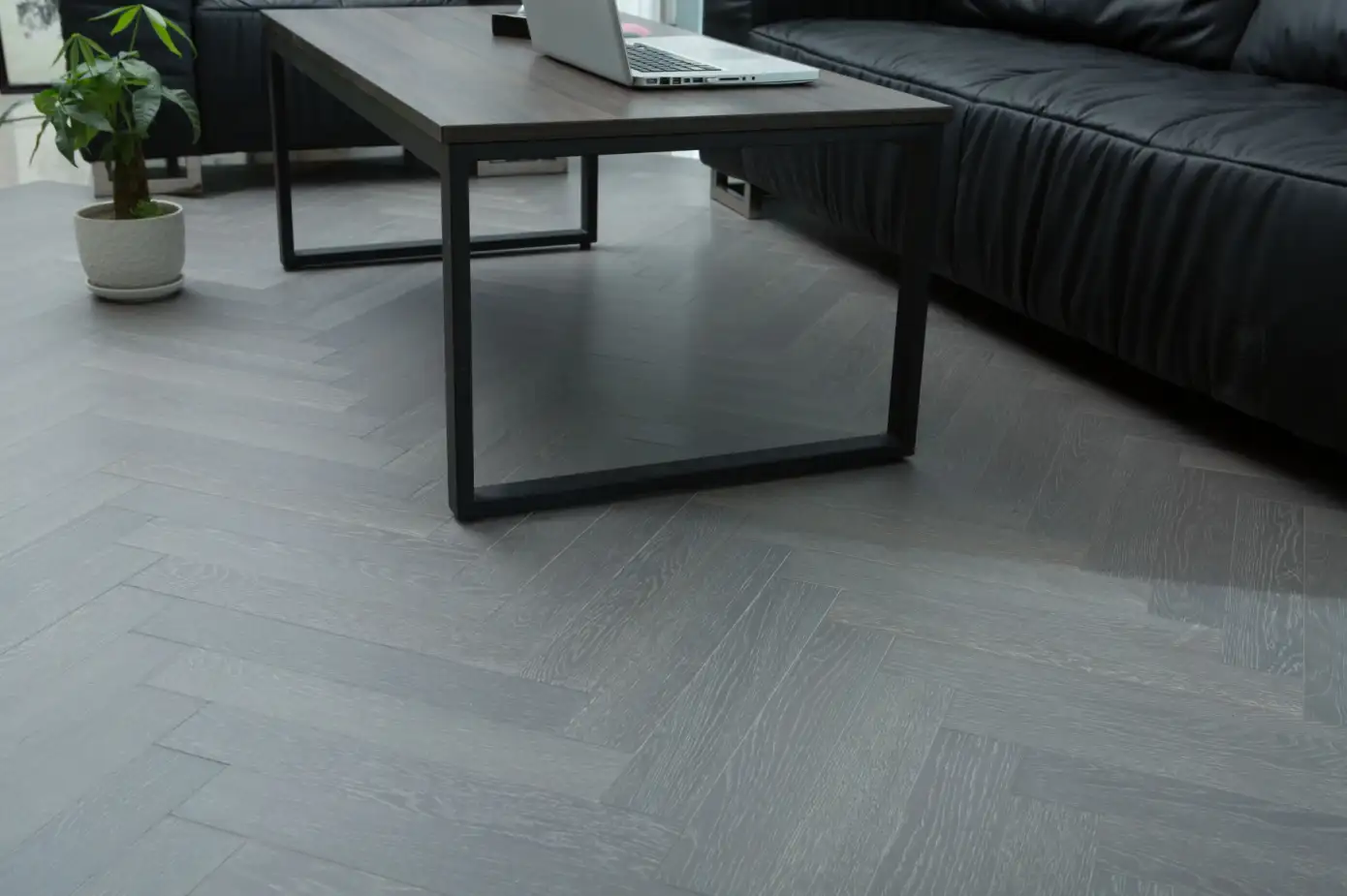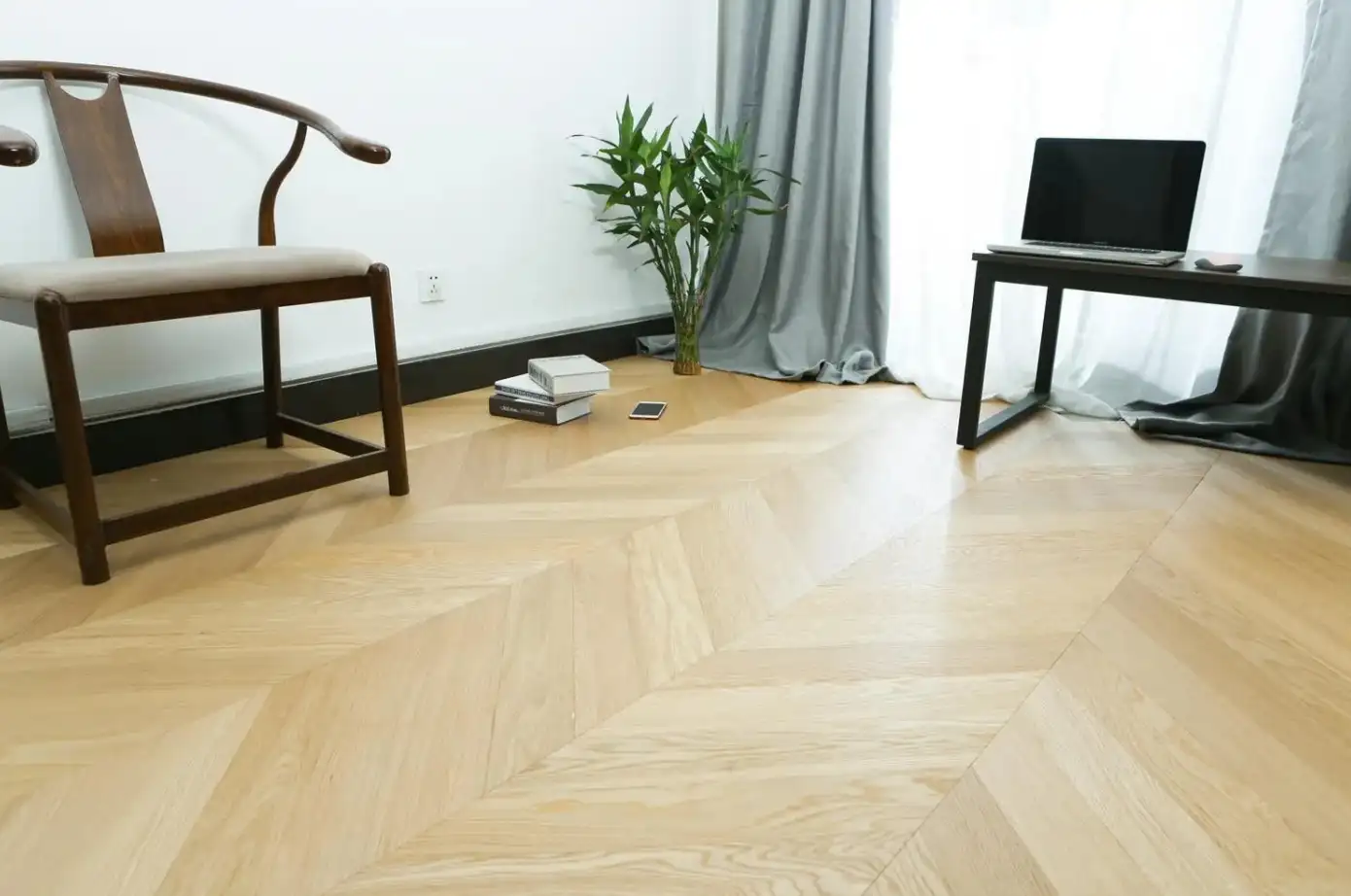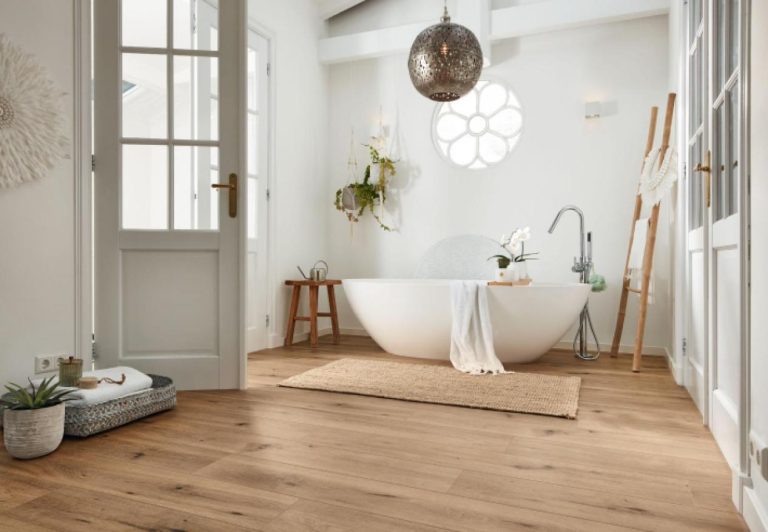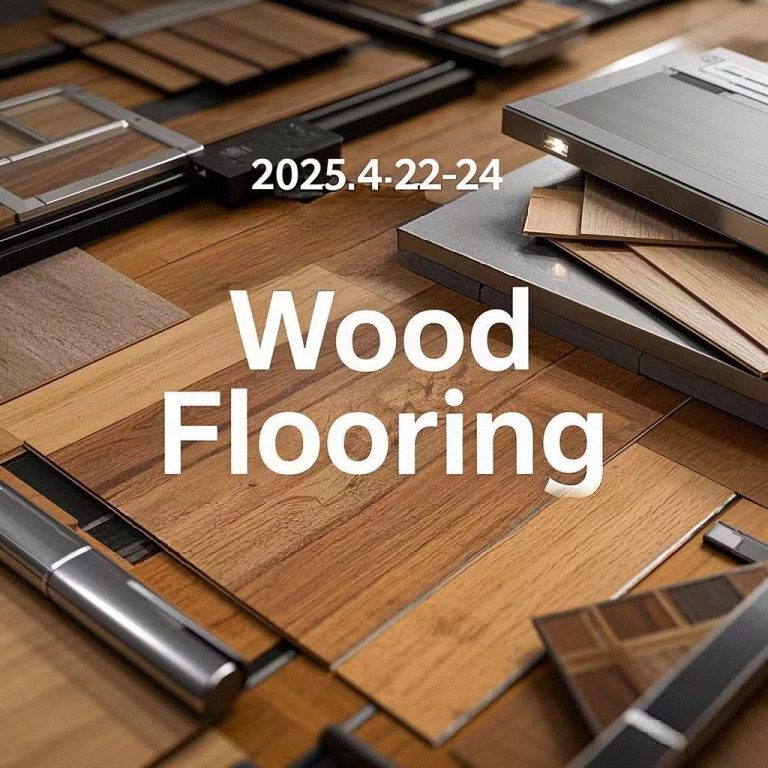Walk into a freshly decorated home or a newly finished office. You may notice a faint chemical smell in the air. Many people think it is just the “new furniture smell.” In truth, that odor often comes from volatile organic compounds (VOCs) and formaldehyde. These substances do not vanish quickly. They can continue to release over months or even years.
So how can you check if engineered wood flooring is really low in VOCs and free of formaldehyde? The process is not difficult. It is mostly about asking the right questions and reading the right documents. Let’s look at it step by step, with practical notes and examples from real use.

Why does low VOC matter in engineered wood flooring
Indoor air quality protection
Think of a child playing on the floor every day for hours. If the boards slowly release formaldehyde, the child keeps breathing it in. Even small amounts build up in the body. VOCs may cause itchy eyes, headaches, or breathing trouble. That is why the issue matters so much in daily life.
Reduced health risks from chemicals
Regulations in many countries are stronger today. Still, some suppliers try to cut costs by using cheap glue. This is where hidden danger lies. Buyers in Europe and North America now ask suppliers directly about emission levels. Ten years ago, this kind of question was rare.
Compliance with international standards
Some countries like Germany or Japan use very strict rules for flooring. If a product can pass those tests, then it is safe almost anywhere. YEHUI flooring uses SGS tested adhesives that meet or even pass these tough standards.
What certifications guarantee safer engineered wood floors
Sustainable forestry assurance
It shows that the timber came from forests managed in a responsible way. YEHUI only chooses logs that are legal and traceable. Buyers can even check the forest source.
ISO9001 and ISO14001 quality management
These codes may sound technical. But they prove something simple: the company runs with order and with care for the environment. ISO9001 focuses on steady quality. ISO14001 focuses on green management. YEHUI uses both, which means the green promise is not only words but also action.
SGS certified adhesives with zero formaldehyde
Third-party testing is another strong proof. YEHUI works with SGS to confirm the glue has no harmful formaldehyde. This step removes one of the biggest worries in engineered flooring.
How to identify truly formaldehyde free products
Verified net aldehyde reduction technology
Some brands use special methods to reduce aldehydes during production. YEHUI includes this in its research and design process. As a result, the boards not only meet limits but can also improve air quality indoors over time.
Use of eco friendly paints and finishes
The top coating on the boards can also release gases. YEHUI chooses paints that are well known worldwide for being safe. This choice makes a big difference in the first months after installation when emissions are usually highest.
Independent emission test reports
It is fair to ask a supplier for test papers. If they refuse, that is a warning sign. Serious exporters share the reports openly and explain them in clear words.
What makes YEHUI engineered wood flooring a reliable choice
Traceable high quality wood sourcing
YEHUI does not run after the cheapest timber. The company buys from what is often called the “gold wood source belt.” This area is famous for legal forestry and stable quality.
Advanced low emission production processes
Every step matters, from cutting to drying and pressing. YEHUI controls details like water balance before pressing the layers. Small steps like this lower the risk of later warping or unwanted gas release.
Strong R and D and innovation in green flooring
YEHUI keeps moving forward. Every year they bring out new surfaces and colors. Yet health always stays at the center. This is one reason their products are welcomed in Europe, North America, and the Middle East.
How can buyers confirm low emission claims before purchase
Requesting product certificates and lab reports
Ask for the numbers. A reliable supplier such as YEHUI can show test results that prove low VOC levels. They also explain what the data means without hiding behind technical words.
Comparing emission levels across suppliers
One seller may advertise “E1” and another “E0.” The E0 grade is stricter, closer to zero. Buyers can place the two side by side before making a large order. This simple check avoids surprises later.

Checking for transparent material disclosure
Some flooring makers publish a full list of materials, even the exact type of glue. When a company is that open, it usually means they are confident and honest.
What are the long term benefits of choosing low VOC flooring
Healthier living and working environments
Floors with low VOCs make homes, offices, and hotels safer to stay in. Less chemical exposure means fewer health problems down the road.
Better durability and lifecycle value
Good glue and safe finishes are not only healthy. They also make the flooring last longer. Stronger boards do not peel or separate, so buyers save money on replacement.
Alignment with green building requirements
Many builders now want projects to reach green standards such as LEED. Flooring with low emissions helps them earn those points. That can even raise the market value of the building, a clear win in competitive real estate.
Conclusion
Checking engineered wood flooring for low emissions is not rocket science. You just need to ask simple questions, look for real papers, and choose a supplier who takes health and the environment seriously. YEHUI has built its name on this. They use formaldehyde free adhesives, certified sustainable wood, and strict factory control.
Choosing YEHUI is more than buying flooring. It is choosing cleaner air indoors and higher value over time.
FAQs
Q1. What is considered a safe VOC level in engineered wood flooring?
Most global rules accept the E1 level or below. The E0 or fully formaldehyde free products are even safer, especially in schools and hospitals.
Q2. Can engineered wood flooring be both durable and low in emissions?
Yes. When makers use high grade glue and safe coatings, the boards stay strong while keeping the air clean. YEHUI flooring does both.
Q3. How can I be sure a supplier’s low VOC claim is real?
The best way is to check third party lab reports, such as SGS tests. A trustworthy exporter will provide these without delay.





